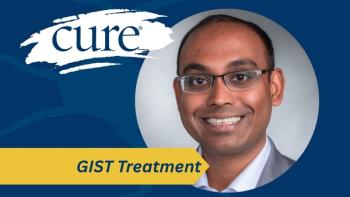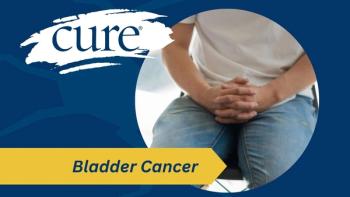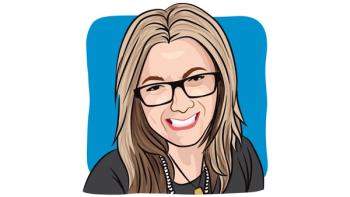
‘Knowledge Is Power’ When Learning About Treatments for Late Relapsed/Refractory Multiple Myeloma
An expert discusses therapies that are changing the treatment landscape and the research to make this disease more livable.
Several emerging therapies to treat patients with late relapsed/refractory multiple myeloma have been approved by the Food and Drug Administration (FDA) or are in the pipeline to be studied, according to an expert at CURE®’s Educated Patient® Multiple Myeloma Summit.
Dr. Nina Shah, an associate professor of clinical medicine at University of California, San Francisco, discussed the strides that have been made in the past five to 10 years in treating patients with this disease. CURE® spoke with Shah to learn more about emerging therapies and the advice she would give to patients and their caregivers.
CURE®: What were some of the major takeaways from your presentation on the treatment of late relapsed/refractory multiple myeloma?
Shah: One of the things we tried to do at the summit was (to) give an idea of not only what’s on the table for myeloma treatment but also what’s coming up. What are (the new drugs) going to mean for patient choice?
I talked about CAR-T cells because I wanted everyone to know (the therapy) may be approved this year. It’s not just about what that means from a treatment perspective, but also from toxicity, quality of life and logistics perspectives. It’s not just a patient; it’s a person going through something. So, we wanted to touch upon what these treatments could mean.
And likewise, up and coming, we have the bispecific T-cell engagers. Those aren’t approved by the FDA yet, but they’re on the horizon. A lot of people like to compare them with the (bispecific T-cell engagers) and antibody drug conjugates. I really wanted to bring to light that there is not the same myeloma treatment for all patients. There might be one treatment that’s good for this patient and one treatment that’s good for another. We’re so grateful to all the patients who have participated in clinical trials that made these treatments available.
READ MORE:
How does late relapsed/refractory multiple myeloma differ from early relapsed/refractory myeloma? Is it treated differently?
Late relapsed/refractory multiple myeloma is definitely different from the early relapsed/refractory multiple myeloma because as each line goes forward, for example, each time someone has a relapse, it’s more difficult to treat the patient. The myeloma becomes smarter and more resistant to the therapies we have. We’ve already used some of the therapies, so they’re not in our back pocket anymore. And there have been more toxicities because patients have been exposed to therapies and it takes a toll on their body. When treating late-line relapsed/refractory myeloma, you have to take into consideration effectiveness of treatment, toxicity of treatment and logistics.
On your presentation slides, you used the hashtag #myelennial. Can you tell us a little more about that?
The reason I call myself a myelennial is that myeloma has absolutely, dramatically changed in the past 10 years, 15 years, even the past five years. The things that we used to do — even before I was practicing myeloma — with melphalan and prednisone, that was it. Then there was (Thalomid, thalidomide), and now even lenalidomide (Revlimid), which was considered novel, is not that novel anymore.
It’s the myeloma millennials. It’s not that I was actually born in the millennial generation, but as a myeloma doctor, I’m a millennial: I want answers and I want them right now on an app.
During your presentation, you mentioned that we don’t know the “insurers’ experience” with these therapies. Can you go into more detail?
It’s really important that we all understand — including the doctors — that just because a treatment is great doesn’t mean it’s going to always be available. And at the end of the day, there is this thing called cost. We’re going to have these new T-cell therapies available. Well, how much will be reimbursed by insurance? Which companies are going to allow that? What is Medicare going to say? And will that be sustainable for how much it costs, considering all the money that went into developing this and all the money it requires to take care of patients getting it? There may be some pushback from the payers. We don’t know, and that will ultimately determine, of course, the Medicare reimbursement. This is something that all of us are going to have to start thinking about.
For the T-cell therapies, it’s a one-time therapy. You can make an argument (that) I’d be willing to spend X amount of money or the insurance company would for a one-time treatment, but then the patient cannot get chemotherapy every three weeks or two weeks.
On the flip side, there are things such as the bispecific T-cell engagers, which are serial treatments similar to (Darzalex, daratumumab) and other drugs. Perhaps at first those cost less, but over time, because they’re working so well, they may end up costing more. It’s really going to be interesting to see how the financial part of this (affects) it.
You also emphasized that these are not curative therapies yet and that clinical trials are so important. Do you think we’ll get to that point where they are curative? And how soon do you think that could happen?
I wish I could say that myeloma was going to be curable. I’ve kind of adjusted my perspective on this; I want myeloma to be livable. I want patients to live a full life, retire, be able to go on their anniversary trips, their grandkids’ trips and all these other things without having to worry that they won’t make it there. If that means that there’s a little bit of myeloma left but it’s not causing clinical problems, that’s OK with me. But so far, we know that (despite) all of these treatments, ultimately, most patients at some point progress. My goal is to try to find treatments that keep patients in remission for as long as possible. Even in the last 10 years, we’ve increased the survival of myeloma patients so much. I’d like to push that curve even higher and higher in the next 10 years.
If there was one piece of advice you would give both patients and caregivers, what would it be?
I think the most important thing is that knowledge is power. The more you can learn about your disease, the more you can attend webinars, the more you can see information that will help you to process —even though it’s overwhelming, it’s really important, because then you have the power to make the decision that’s right for you because there isn’t always one correct decision.
This interview has been edited for clarity and conciseness.
For more news on cancer updates, research and education, don’t forget to





